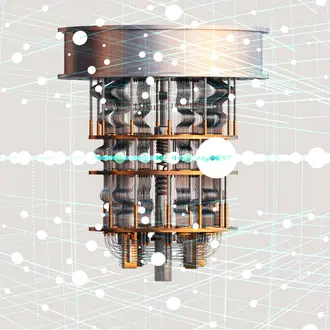Federal Express began operating in April 1973 in Memphis, Tennessee. The company had 389 employees and delivered 186 packages on its first day of business.
Almost 50 years later, FedEx has nearly 550,000 employees around the world and moves an average of more than 16 million shipments through its facilities each business day.
The key to FedEx’s success is constant innovation, according to the company’s founder and executive chairman, Frederick W. Smith. “If you’re in a business and you don’t innovate, you’re in the process of commoditization or extinction,” he said during a recent talk at MIT hosted by the MIT Center for Transportation and Logistics as part of the center’s 50th anniversary celebration. “Not every year is great — we make some mistakes, one thing or another. But somehow we got from [186] packages to 100 billion, because we’re very analytical and we do understand you have to change. To change means … to innovate, and to innovate in this day and time, it means adopting leading-edge technology.”
Smith not only started a company, “he changed transportation and logistics. He started an industry more than a company,” said center director Yossi Sheffi, a professor of civil and environmental engineering. “Getting something delivered the next day or tracking a package are among the innovations FedEx introduced.”
During a fireside chat with Sheffi, Smith talked about climate change, what technology trends he’s following, how FedEx views competition with Amazon, and how he keeps new ideas flowing.
On AI, the Internet of Things, and robotics
FedEx has long been a pioneer in air cargo, package tracking, and online shipping. Smith said he’s particularly interested in three technologies that will affect these areas:
1. Artificial intelligence and machine learning. In 2020, FedEx introduced FedEx Dataworks, an organization tasked with using AI to analyze data and create more efficient shipping. For example, predictive analytics could identify when there might be a delivery delay or problem and send a note to recipients.
“Our capabilities in that regard are going to change enormously how we operate and give great value to our customers,” Smith said. “And we now have customers who are essentially buying just our digital services, not our transportation services. It’s nascent, but it’s going to be a very big deal.”
2. The Internet of Things. Interconnected computing devices, along with radio frequency identification, are the next advancement in package tracking, Smith said. FedEx developed a proprietary technology called FedEx SenseAware — sensors that use Bluetooth technology to transmit real-time location data for packages. This allows FedEx to intervene or solve problems on the fly, Smith said. For example, the company used SenseAware devices to track shipments of the COVID-19 vaccine and send updates in case of delays.
Related Articles
3. Robotics, particularly autonomous vehicles. Robotics is especially promising for transportation logistics, including loading and unloading trucks, Smith said. Many FedEx facilities are automated.
While Smith said he’s skeptical about autonomous vehicles being used for personal transportation, he thinks the technology will be successful for shipping cargo via highways. “I think that’s on the horizon,” he said, adding that he expects to see trucks without drivers around 2027. “Mapping and sensors are [around] the curve, and the processing capabilities are such that over-the-road highway vehicles can be safely driven.” This will also be practical, he said, given that wages for truck drivers have decreased and it’s been harder for companies to find drivers. “I think it’s coming,” Smith said.
On carbon taxes and electric vehicles as climate solutions
FedEx is an energy-intensive company, Smith said — it takes a lot of fossil fuel to power nearly 700 planes and 200,000 vehicles. The company has adopted electric vehicles, he said, with a commitment to have all-electric pickup and delivery vans by 2040. One recent investment was in all-electric cargo vans developed by BrightDrop.
“That’s sort of the sweet spot of a battery technology. Cars don’t really match up without subsidies, and — the Tesla Semi notwithstanding — they haven’t gotten a battery semitruck. But for pickup and delivery vehicles … you can make the case for them,” he said.
In addition, “We have long supported and advocated for a carbon tax,” Smith said, adding that he agrees with Yale professor William Nordhaus, who has called for taxing pollution.
FedEx also has a carbon calculator to show customers their estimated emissions. “We show people, ‘Hey, if you need this overnight, this is the carbon it takes. If you’ll give us three days to deliver it, this is the carbon it takes.’ … We’ll share that with you.
“We’re doing all kinds of things, and we’re doing it for pure economics,” he said. “But even if it weren’t pure economics, our customers won’t do business with us if they don’t think we are environmentally responsible. That’s clear as a bell. Particularly the young folks.”
On whether Amazon and FedEx are competitors
While some view Amazon as a shipping giant to rival FedEx and UPS, Smith doesn’t agree.
“We have a lot of respect for Amazon, but we don’t look at them as a peer competitor, and I’m sure they don’t look at us as a peer competitor,” Smith said. “They’re essentially a retailer who makes the vast majority of their money from selling you things and taking a margin on that.”
Amazon’s delivery and transport system is not a hub-and-spoke model, like FedEx’s system of regional hubs and location stations is. Instead, Amazon is “designed to move slow-moving inventory that is held in a small number of distribution centers, and move them cross-country so that you can get them in two business days,” he said.
Smith said that he sees UPS as the company’s only real peer competitor. “DHL is very strong overseas, but they’re not strong in the United States,” he said. “And the [United States] Postal Service is involved in the package business generally for very lightweight stuff that goes along with the mail.”
Embrace “characters” and failure
Keeping an innovative mindset requires a few key things, Smith said.
First, “tolerate characters,” he said, noting that some people who come up with good ideas can seem strange or don’t fit a cookie-cutter mold of what’s expected. “That’s what people thought about me,” he said. “Great ideas come from strange places. … You’ve got to encourage it and accept it from wherever it’s coming.”
His approach might surprise some people, Smith said. “I get emails … all the time. I always reply to them — I mean, if they’re even remotely credible — because I want to see [if] maybe that’s the person that’s got that one breakthrough idea.”
Second, it’s important to tolerate failure and reasonable risk, Smith said. “You don’t want to bet the enterprise, but you’ve got to put something into research and development or try to change things. Not everything’s going to work.”
In sum, “find the bright lights, don’t have any preconceived notions of who they are, tolerate idiosyncrasy, and be willing to accept the failure,” he said.
Read next: Post-pandemic, supply chains retool for the new (ab)normal



